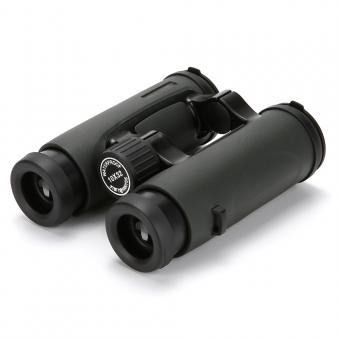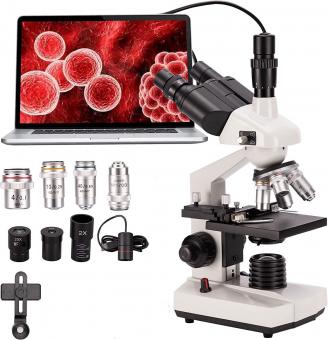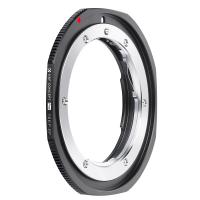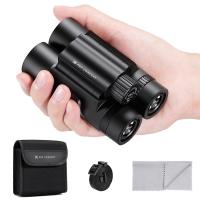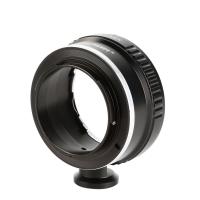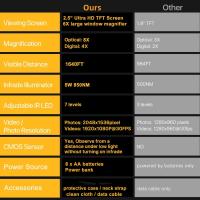What's The Field Of View On A Microscope ?
The field of view on a microscope refers to the area that is visible through the eyepiece or objective lens. It is the circular area that you see when you look through the microscope. The size of the field of view depends on the magnification of the lens being used. At higher magnifications, the field of view becomes smaller, while at lower magnifications, it becomes larger. The field of view is an important consideration when using a microscope, as it affects the amount of detail that can be seen and the ease with which specimens can be located and focused.
1、 Optical magnification
The field of view on a microscope refers to the area visible through the eyepiece when looking at a specimen. It is determined by the diameter of the objective lens and the magnification of the eyepiece. The field of view can vary depending on the type of microscope and the objective lens being used. For example, a low power objective lens will have a larger field of view than a high power objective lens.
Optical magnification, on the other hand, refers to the increase in apparent size of a specimen when viewed through a microscope. It is determined by the ratio of the size of the image produced by the objective lens to the size of the specimen. Optical magnification can be calculated by multiplying the magnification of the objective lens by the magnification of the eyepiece.
It is important to note that while optical magnification can provide a detailed view of a specimen, it does not necessarily provide a complete picture. Other factors such as resolution, contrast, and depth of field also play a role in the quality of the image produced by a microscope.
In recent years, advances in technology have led to the development of new types of microscopes with improved capabilities. For example, confocal microscopy allows for the imaging of thick specimens with high resolution and minimal distortion. Super-resolution microscopy techniques such as STED and PALM have also been developed, allowing for the visualization of structures at the nanoscale level.
Overall, the field of view and optical magnification are important considerations when using a microscope, but they are just two of many factors that contribute to the quality of the image produced. As technology continues to advance, new techniques and tools will likely emerge to further enhance our ability to study the microscopic world.

2、 Numerical aperture
The field of view on a microscope refers to the area of the specimen that is visible through the eyepiece. It is determined by the magnification of the objective lens and the diameter of the eyepiece. The higher the magnification, the smaller the field of view.
However, the field of view is also affected by the numerical aperture (NA) of the objective lens. NA is a measure of the lens' ability to gather and focus light, and it is determined by the refractive index of the lens and the angle of the cone of light that enters the lens. A higher NA means a larger cone of light and a smaller depth of field, resulting in a sharper and more detailed image.
In recent years, there has been a growing interest in developing microscopes with a larger field of view, as this can improve imaging speed and efficiency. One approach is to use multiple lenses or a curved detector to capture a wider area of the specimen. Another approach is to use computational methods to stitch together multiple images into a larger field of view.
Overall, the field of view on a microscope is a crucial factor in determining the quality and efficiency of imaging. While NA plays a role in determining the field of view, there are also other factors that can be optimized to achieve a larger and more useful field of view.

3、 Eyepiece field number
The field of view on a microscope refers to the area that is visible through the eyepiece when looking at a specimen. It is determined by the magnification of the objective lens and the eyepiece. The field of view can vary depending on the type of microscope and the specific lenses being used.
One way to measure the field of view is through the eyepiece field number. This number represents the diameter of the field of view in millimeters when using a specific eyepiece with a particular objective lens. For example, if the eyepiece field number is 18mm and the objective lens has a magnification of 10x, the field of view would be 1.8mm in diameter.
It is important to note that the field of view can also be affected by the size of the specimen being viewed and the distance between the objective lens and the specimen. Additionally, some microscopes may have adjustable diaphragms or other features that can alter the field of view.
In recent years, advances in technology have led to the development of digital microscopes that can capture and display images on a computer screen. These microscopes often have software that allows for measurements of the field of view and other parameters to be made automatically.
Overall, understanding the field of view on a microscope is essential for accurately observing and analyzing specimens.

4、 Objective lens size
The field of view on a microscope refers to the area visible through the eyepiece when looking at a specimen. It is determined by the size of the objective lens, which is the lens closest to the specimen. The larger the objective lens, the smaller the field of view, and vice versa. This is because a larger lens magnifies the specimen more, but also narrows the field of view.
The field of view is an important consideration when using a microscope, as it affects the amount of detail that can be seen in a specimen. A larger field of view allows for a wider view of the specimen, but may sacrifice some detail. A smaller field of view provides greater detail, but may require more time to examine the entire specimen.
In recent years, advances in microscope technology have led to the development of objective lenses with larger apertures and higher numerical apertures. These lenses provide greater resolution and clarity, allowing for more detailed examination of specimens. Additionally, some microscopes now include digital imaging capabilities, allowing for the capture and analysis of images with greater precision and accuracy.
Overall, the field of view on a microscope is an important factor to consider when selecting a microscope for a particular application. Advances in technology continue to improve the capabilities of microscopes, providing researchers and scientists with increasingly powerful tools for examining the microscopic world.


